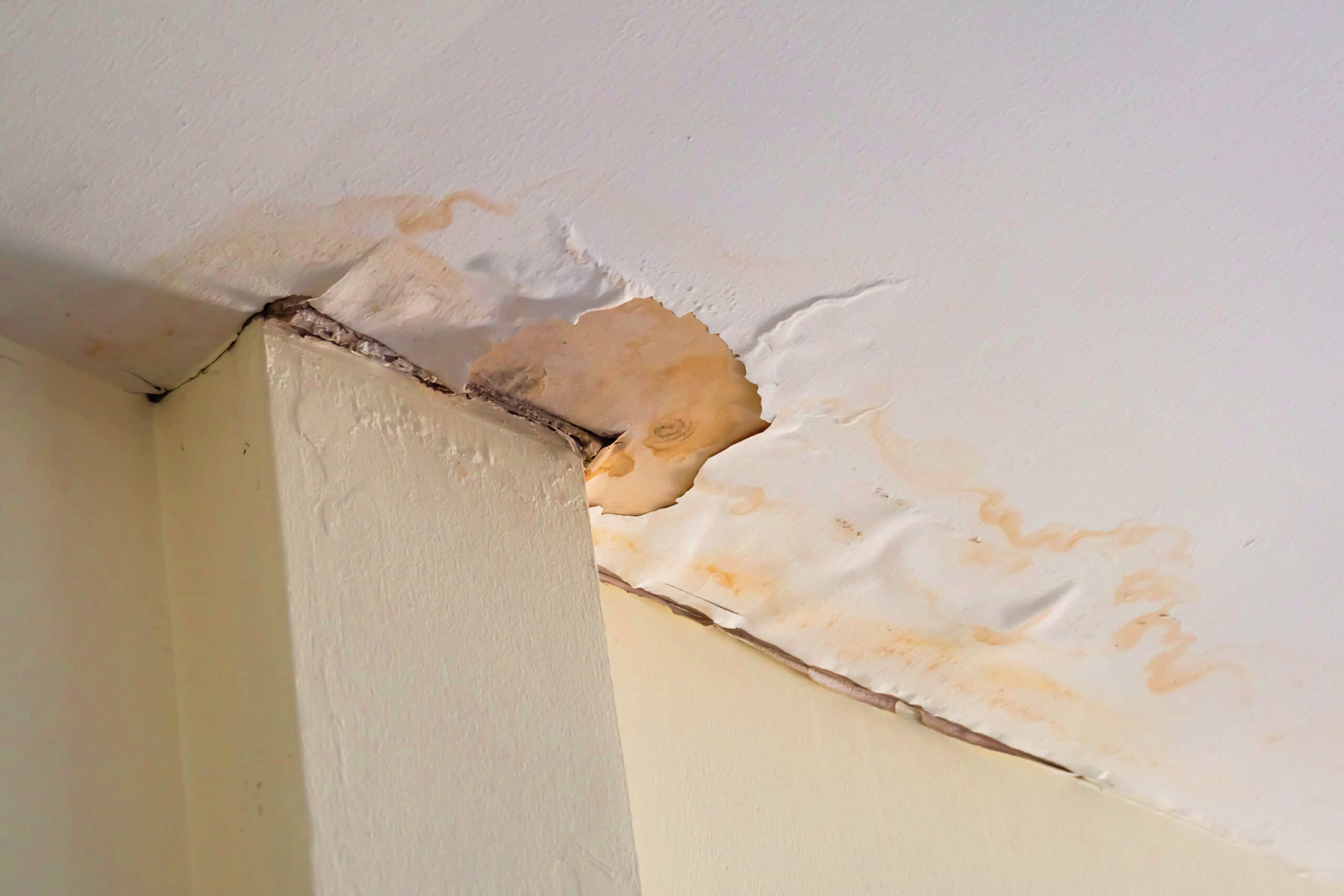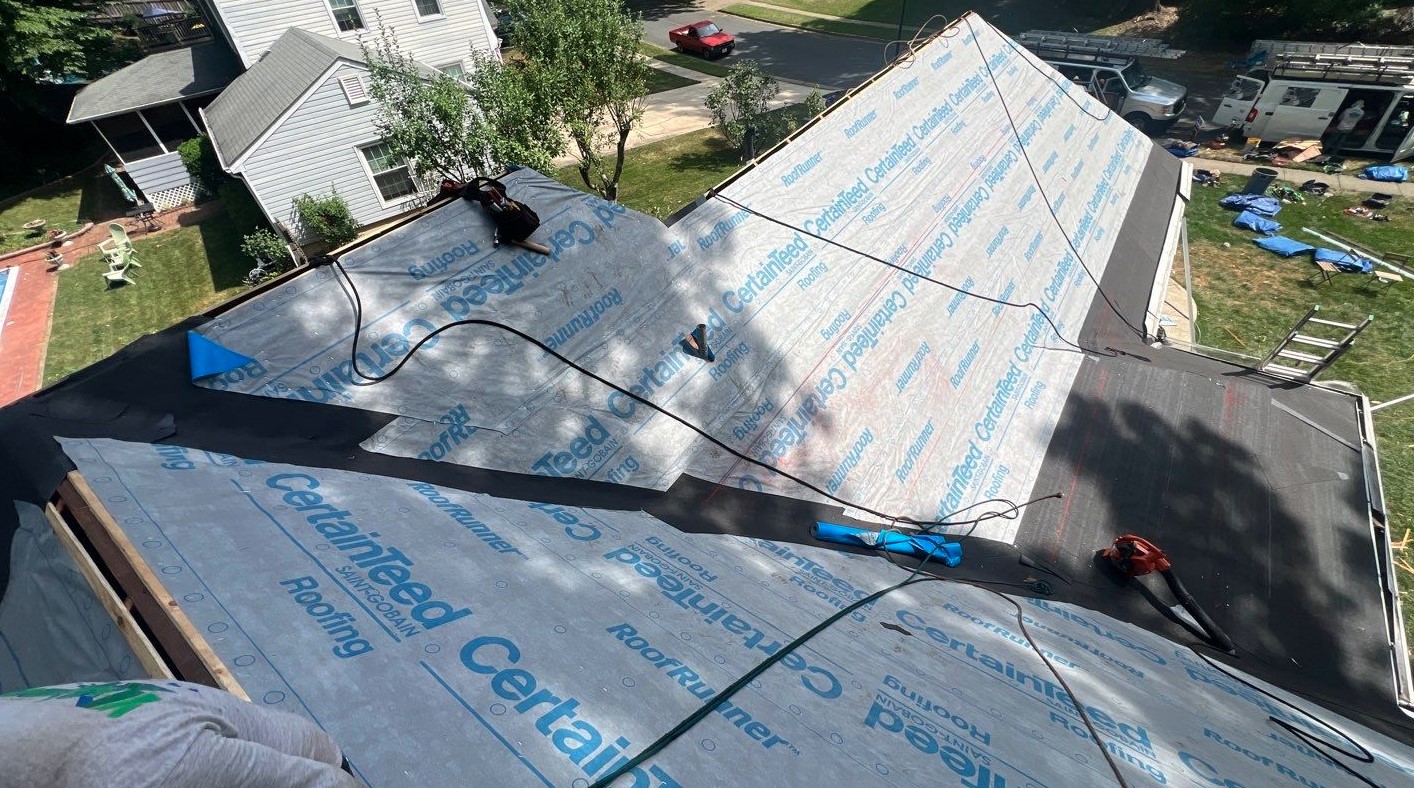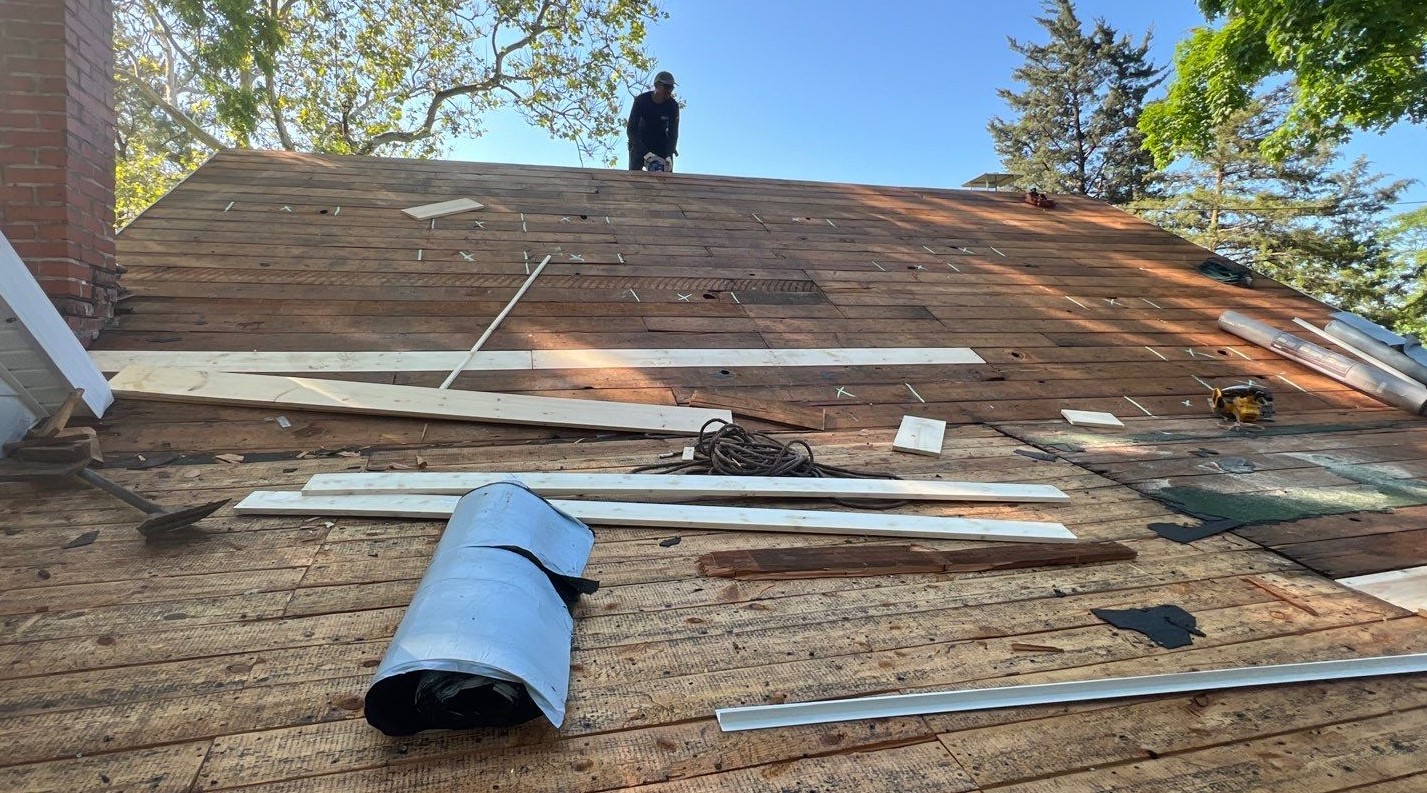TPO roofing, short for thermoplastic polyolefin, is a type of single-ply roofing membrane that’s gaining popularity for covering flat roofs on commercial and residential buildings.
It combines durability with flexibility to withstand harsh weather conditions and has heat-welded seams which create a water-tight bond stronger than the membrane itself. This makes TPO an excellent choice for anyone looking to protect their property against leaks and water damage.
The energy efficiency of TPO roofing systems comes from their highly reflective properties, reducing the amount of heat absorbed by the building and helping cut down on cooling costs during hot summer months.
They’re also UV resistant, which prolongs their lifespan by preventing damage caused by long-term sun exposure. Lightweight yet tough, this material can be installed faster than traditional options like asphalt shingles or EPDM rubber roofing.
We apply it over a solid substrate such as expanded polystyrene or cover boards that provide additional support and insulation benefits.
Next up: Key Advantages of TPO Roofing
Key Advantages of TPO Roofing
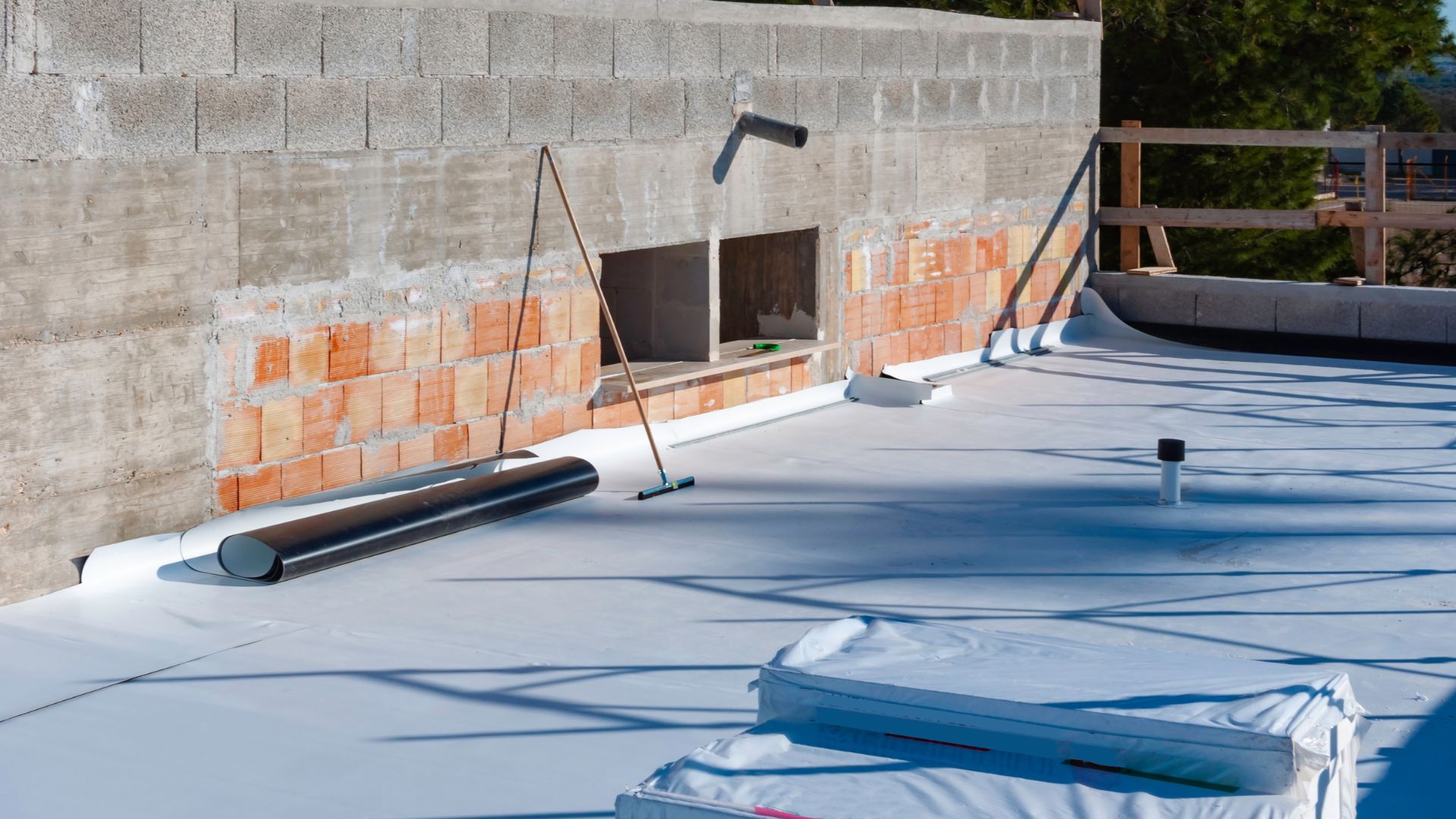
TPO roofing offers several key benefits including cost-effectiveness, flexibility, leak protection, energy efficiency, environmental friendliness, and aesthetic appeal. These advantages make TPO roofing a popular choice for both residential homeowners and commercial property managers looking for a durable and sustainable roofing solution.
Cost-Effectiveness
We recognize the importance of keeping expenses in check, which is why we’re excited about the cost-effectiveness of TPO roofing. It stands as a budget-friendly choice compared to many other roofing materials, and this affordability extends beyond just initial costs.
The installation process requires less labor because TPO is lightweight, meaning you save on both material and manpower.
Consider the long-term financial benefits too: its energy efficiency leads to reduced energy consumption. With TPO roofs reflecting sunlight instead of absorbing heat, your air conditioning won’t have to work overtime—translating into significant savings on those utility bills.
Moreover, thanks to its durability and resistance to wear and tear, you’ll encounter fewer repair costs down the line.
Flexibility isn’t just an advantage in terms of product performance; it also contributes greatly to cost efficiency over time.
Flexibility
While TPO roofing scores high on cost-effectiveness, what truly sets it apart is its remarkable flexibility. This unique feature ensures that no matter how your commercial or residential roof expands, contracts, or moves over time, the integrity of your TPO roofing system remains intact.
Its ability to adapt to all sorts of movements isn’t just about durability; it’s also about maintaining a high-performance level through extreme temperatures and weather conditions.
The hot air-welded seams create strong bonds that contribute to this incredible pliability. As you manage properties with rooftops exposed to various environmental stresses or frequent temperature fluctuations, rest assured knowing that TPO’s flexible nature can withstand these challenges without compromising its water-resistant capabilities or succumbing easily to punctures.
Choose TPO for a roofing solution that bends but doesn’t break under pressure.
Leak Protection
With its superior leak protection capabilities, TPO roofing offers a reliable solution for both residential homeowners and commercial property managers. The TPO roofing membranes provide enhanced UV resistance, chemical exposure resistance, and strong seams that reduce the potential for leaks.
Additionally, the material’s ability to resist mold growth, punctures, tears, and dirt accumulation further contributes to its outstanding leak protection. Cost efficiency paired with UV and weather resistance makes TPO an optimal choice for ensuring long-term leak protection on both residential and commercial buildings.
TPO roofing has proven successful in withstanding various elements over time. This factor adds significant value by providing reliability in preventing leaks, making it a suitable option when considering effective roof protection strategies.
Energy Efficiency
By enhancing energy efficiency, TPO roofing presents a sustainable solution for residential and commercial buildings. This material reflects the sun’s UV rays, effectively reducing heat absorption and minimizing energy consumption.
With its lightweight and reflective properties, TPO roofing combats the urban heat island effect on structures while promoting environmentally friendly practices. For property managers seeking cost-effective options with long-term benefits, TPO roofing stands out as an efficient choice that aligns with sustainability goals.
Energy efficiency remains a crucial factor in addressing environmental concerns and operational costs for both homeowners and property managers. Through the installation of TPO roofing, significant reductions in heat flow can be achieved, leading to improved indoor comfort without compromising on performance or longevity.
Environmental Friendliness
TPO roofing stands out for its environmental friendliness, making it an attractive choice for those seeking sustainable building solutions. With a composition free from chlorine and other harmful chemicals, TPO roofing is both eco-conscious and energy-efficient.
The material’s reflective surface aids in reducing energy consumption while also contributing to the creation of cool roofs, minimizing heat retention within buildings. Additionally, TPO roofing is crafted from recycled materials further emphasizing its commitment to sustainability.
As an added benefit, when it comes time for replacement or upgrades, TPO roofing is 100% recyclable, ensuring minimal environmental impact.
Aesthetic Appeal
TPO roofing enhances the overall look of a building, offering a boost in aesthetic appeal for both residential and commercial properties. The membrane comes in a variety of colors, allowing for customization and increased visual appeal to complement any architectural style.
Additionally, TPO roofing’s resistance to mold and dirt contributes not only to its low-maintenance ease but also its long-term aesthetic attractiveness.
The selection of TPO roofing opens up exciting possibilities for upgrading the appearance of your property while also benefiting from its many outstanding functional features. To dive deeper into understanding this versatile roofing solution, let’s take a closer look at potential drawbacks that should be considered before making an informed decision.
Potential Drawbacks of TPO Roofing
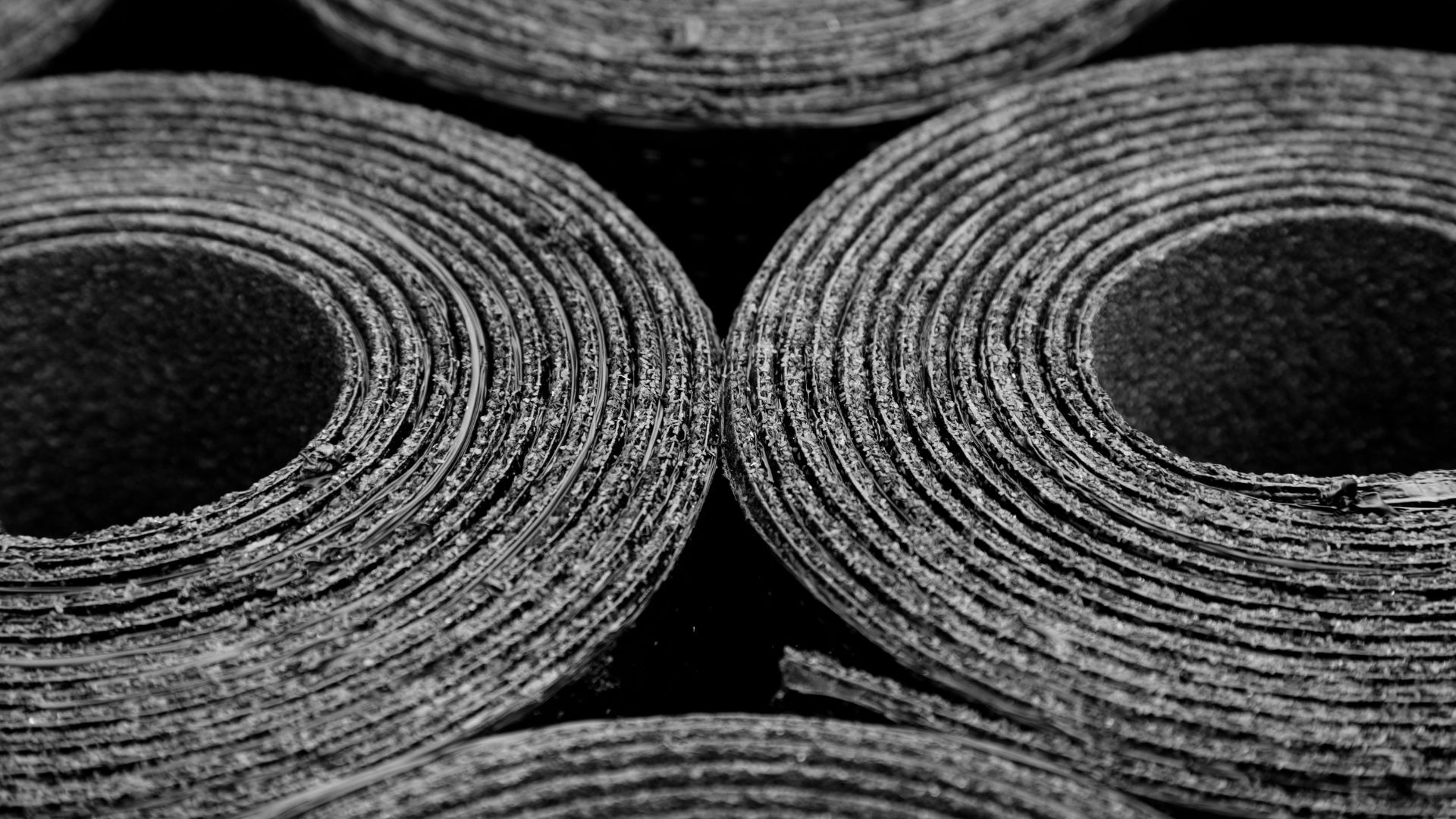
While TPO roofing offers numerous benefits, it’s important to consider the potential drawbacks such as the newness of the material, quality variations, and thickness disparities. To learn more about these considerations, keep reading for a comprehensive understanding of TPO roofing.
Newness of the Material
TPO roofing is a newer material in the world of roofing, composed of a blend of polypropylene and ethylene-propylene rubber. This innovative composition offers several advantages, including flexibility, energy efficiency, and environmental friendliness.
However, property owners should be mindful that due to its relative novelty, there might be quality variations and thickness disparities among different TPO products.
As we explore the benefits and installation process of TPO roofing, it’s important to consider the newness of the material. While TPO has quickly gained popularity for its numerous advantages over traditional roofing materials, property owners should remain vigilant about potential quality variations as manufacturers continue to refine their production processes.
Quality Variations
Quality variations in TPO roofing can impact the performance and durability of the material. It’s vital for homeowners and property managers to be aware that not all TPO roofing products are created equal.
These variations can result from differences in manufacturing processes, material compositions, or quality control standards, which may affect the overall reliability and longevity of the roof.
Understanding these quality discrepancies is crucial when making decisions about roof installations or replacements. It’s essential to work with reputable contractors who source high-quality TPO membranes to ensure that your roofing system meets industry standards for performance and lifespan.
Thickness Disparities
Thickness disparities in TPO roofing can lead to misconceptions about its longevity. It’s important to note that the thickness of a TPO roof doesn’t necessarily equate to long-term durability.
This means that even if a TPO roof is thicker, it may not be more durable compared to a thinner one. Therefore, when evaluating TPO roofing options, it’s crucial for property owners and managers to consider factors beyond just thickness, such as material quality and installation methods, to ensure the longevity and performance of their roofing system.
TPO Roofing Installation Process
The installation process for TPO roofing involves preparing the roof surface, attaching the TPO membrane, and then seaming and finishing the TPO roof to ensure proper water resistance and durability.
Each step is crucial in ensuring a long-lasting and high-performing roofing system for residential and commercial properties.
Preparing the Roof Surface
To prepare the roof surface for TPO roofing installation, thorough cleaning and removal of debris, old roofing materials, and damaged sections is crucial. Here are the steps involved in preparing the roof surface:
- Inspect the Roof: Begin by assessing the condition of the existing roof to identify any areas requiring repair or replacement before the installation of TPO roofing.
- Clearing Debris: Remove any dirt, leaves, branches, and other debris from the roof to ensure a clean surface for installing the TPO membrane.
- Removing Old Roofing Materials: Strip away any old roofing materials such as shingles or tiles to create a smooth and even surface for attaching the TPO membrane.
- Repair Damaged Sections: Address any damaged sections on the roof by replacing rotted sheathing or repairing structural issues that could affect the integrity of the new TPO roofing system.
- Final Cleaning: Use a pressure washer or appropriate cleaning methods to thoroughly wash and clean the roof surface, removing all remaining dirt and ensuring it is free from contaminants that could compromise adhesion.
- Application of Primer: Apply a primer to enhance adhesion between the TPO membrane and the roofing substrate, promoting a secure bond for long-lasting performance.
Attaching the TPO Membrane
After thoroughly preparing the roof surface, the next step in the TPO roofing installation process is attaching the TPO membrane. This involves securing the membrane to the roof structure to ensure durability and longevity. Here are the key steps involved:
- Lay Out the Membrane: Unroll and position the TPO membrane over the prepared surface, ensuring proper alignment and overhang for seaming.
- Mechanical Fastening: Use mechanical fasteners and plates to secure the TPO membrane to the roof deck, providing added resistance against uplift forces.
- Proper Spacing: Ensure adequate spacing between fasteners according to manufacturer specifications for optimal performance.
- Edge Detailing: Pay special attention to detailing around edges, corners, and penetrations, using appropriate adhesives or termination bars as needed.
- Weld Seams: Utilize heat welding techniques for seams, creating strong and watertight bonds between adjoining sheets of TPO membrane.
- Quality Inspection: Conduct a thorough inspection of fastenings, seams, and edge details to verify proper installation before moving on to subsequent phases.
Seaming and Finishing the TPO Roof
When installing TPO roofing, hand crimpers are used to form the seams around clips and end laps for a secure bond.
- The final touches, including heat treatment and welding, are crucial steps in ensuring a proper TPO roof installation.
- During installation, the seams of the TPO membrane are heat – welded together to create a strong and watertight seal.
- The heat treatment process used on the seams requires dry conditions for a successful installation.
- Proper welding is essential to prevent seam failure due to poor TPO product or incorrect welder use.
- Seaming and finishing play a vital role in guaranteeing maximum seam strength and a robust watertight seal for your TPO roofing system.
Assessing and Repairing Roof Damage: A Step-by-Step Guide
First, assess the damage and inspect the roof surface for potential issues. Then proceed with the following step-by-step guide:
- Clean the damaged area thoroughly to remove any dirt and debris.
- Use a seam probe to identify any loose or damaged seams in the TPO membrane.
- Inspect the roof edges and flashings for any signs of damage or deterioration.
- Check for punctures, tears, or blistering on the TPO membrane.
- Determine if there are any signs of water infiltration or leaks on the interior ceiling or walls.
- Document all identified issues and take clear photographs as part of your assessment process.
- Consult with a professional roofing contractor to determine the best course of action for repairing the identified damage.
Conclusion
In conclusion, TPO roofing offers significant benefits to both residential homeowners and commercial property managers. The installation process is efficient and cost-effective, with options for attachment by adhesives or mechanical fastening.
TPO roofing’s heat-reflective properties reduce energy consumption and offer superior resistance to long-term heat, making it a durable and environmentally friendly roofing option.
The flexibility of materials makes for easier installation with lower costs than traditional materials. Additionally, TPO roofing provides resistance to mold and dirt, further adding to its appeal as an energy-efficient and low-maintenance choice for modern roofs.
For a detailed guide on how to assess and repair roof damage, be sure to check out our comprehensive step-by-step guide.
FAQs
1. What makes TPO roofing energy efficient?
TPO, which stands for Thermoplastic Polyolefins, is a cool roofing option that reflects sunlight to reduce energy consumption in buildings. Its membrane roofing design helps maintain stable indoor temperatures, resulting in energy savings.
2. Can TPO roofs withstand severe weather conditions?
Yes, TPO membranes are known for being highly durable and resistant to ultraviolet rays and chemicals. They are also waterproof and flame-resistant, helping protect against severe weather conditions like heavy rain and strong winds.
3. How long does a TPO roof typically last?
With proper installation and maintenance, a TPO roofing system can last up to 20 years or more. Thanks to its sturdy thermoplastics material, it resists common problems like seam failures that can shorten roof lifespan.
4. What is involved in the installation process of TPO roofing?
The installation of TPO involves rolling out large sheets of the single-ply membrane onto the flat surface of your roof and securing them either with bonding adhesive or by being mechanically fastened with screws into the insulation material beneath.
5. Is installing TPO roofing cost-effective compared to other types?
Yes, when you consider its longevity and role in reducing energy costs due to high R-values (a measure of insulation), installing a white or light-colored EnergyStar-rated TPO roof can be very cost-effective per square foot over time.
6. Does getting a new layer of foam insulation make sense when I install my new TPO roof?
Absolutely! Adding layers such as spray foam or extruded polystyrene underneath your new thermoplastic polyolefin membrane enhances its insulating properties further – ensuring even greater energy efficiency for your commercial space’s ceilings and floors.



